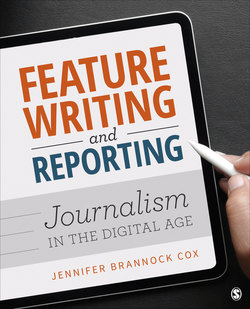Читать книгу Feature Writing and Reporting - Jennifer Brannock Cox - Страница 63
На сайте Литреса книга снята с продажи.
Opinion Features
ОглавлениеOpinion writing allows reporters to use first-person language and share their personal thoughts and experiences with readers. Because reporters are called upon to be unbiased, they need to be careful in choosing what topics they share their opinion about. For example, a politics reporter should not write a column praising the efforts of one political party over another, but she may write about why it is important to vote. A business reporter should not write an opinion piece advising people what stocks to buy or sell, but he may offer insight to readers on how to find a stockbroker and get started with trading.
While there is potential for ethical conflicts of interest in opinion writing, stories that make reporters seem “human” and relatable like these tend to attract readers. The New York Times learned this in 2006, when columnist Amy Sutherland wrote an article about her own marriage. “What Shamu Taught Me About a Happy Marriage” relayed Sutherland’s use—on her husband—of positive affirmation techniques that she had learned while researching exotic animal training. The column was filled with anecdotes, advice and a blend of humor and personal reflection. And although the story was not actually about a beloved killer whale, readers regularly clicked on the story because it appealed to their cravings—self-improvement and animals. The result: It was the most emailed story of 2006 for The New York Times, beating out coverage of the execution of Iraqi dictator Saddam Hussein and other important news events.
One of several iterations of Sea World’s popular killer whale, Shamu, performing for fans.
Pixabay/@nightowl
Feature reporters have to be descriptive, a useful tool in opinion writing. First-person stories should engage readers’ senses. Using similes and metaphors can help readers without knowledge of the topic put your experience into perspective. For example, instead of describing something as “thick” or “heavy,” consider relating the texture to your experience with it: “The water was viscous, like paddling through a vat of honey.”
When writing a column or first-person article, reporters need to establish a clear point and carry the reader from start to finish without veering in different directions. Opinion writers also need a strong voice—a personal style of writing that conveys the reporter’s character. Times Union (Albany, New York) reporter Betsy Bitner uses humor—with a dash of self-deprecation—and vivid imagery to tell stories through her columns, as illustrated in this excerpt about retail discount cards:
There are all sorts of things you can collect without even trying, like junk mail, dust and phobias. Me, I collect those little plastic cards that stores give out that you put on your key chain. They’re called customer loyalty or rewards cards and I never turn one down when it’s offered. I guess I have a hard time saying no (although my husband might dispute that claim).
There are advantages to carrying around a couple of pounds of customer loyalty cards. For one thing, I never lose my car keys because it’s hard to misplace something with a mass large enough to influence the tides. And they add enough weight to my purse that it qualifies as a lethal weapon. It would be nice if at least one of the cards was for a discounted chiropractic adjustment.9
Opinion columns often follow a similar pattern that can serve as an outline for you:
Introduction: Make a bold statement about your topic.
Exposition: Explain your previous feelings or experiences with the topic, providing relevant background information to help readers understand where you are coming from.
Description: Give a highly visual play-by-play to keep the reader engrossed in the story.
Closing: Reflect on what you have learned and how you feel about the topic now.
Readers often enjoy stories from people who are pushed out of their “comfort zone.” Consider practicing your opinion writing with a barrier-breaker column. Choose something you have not done before or want to do in a different way. Try it, and take the reader along for the experience through your writing.
